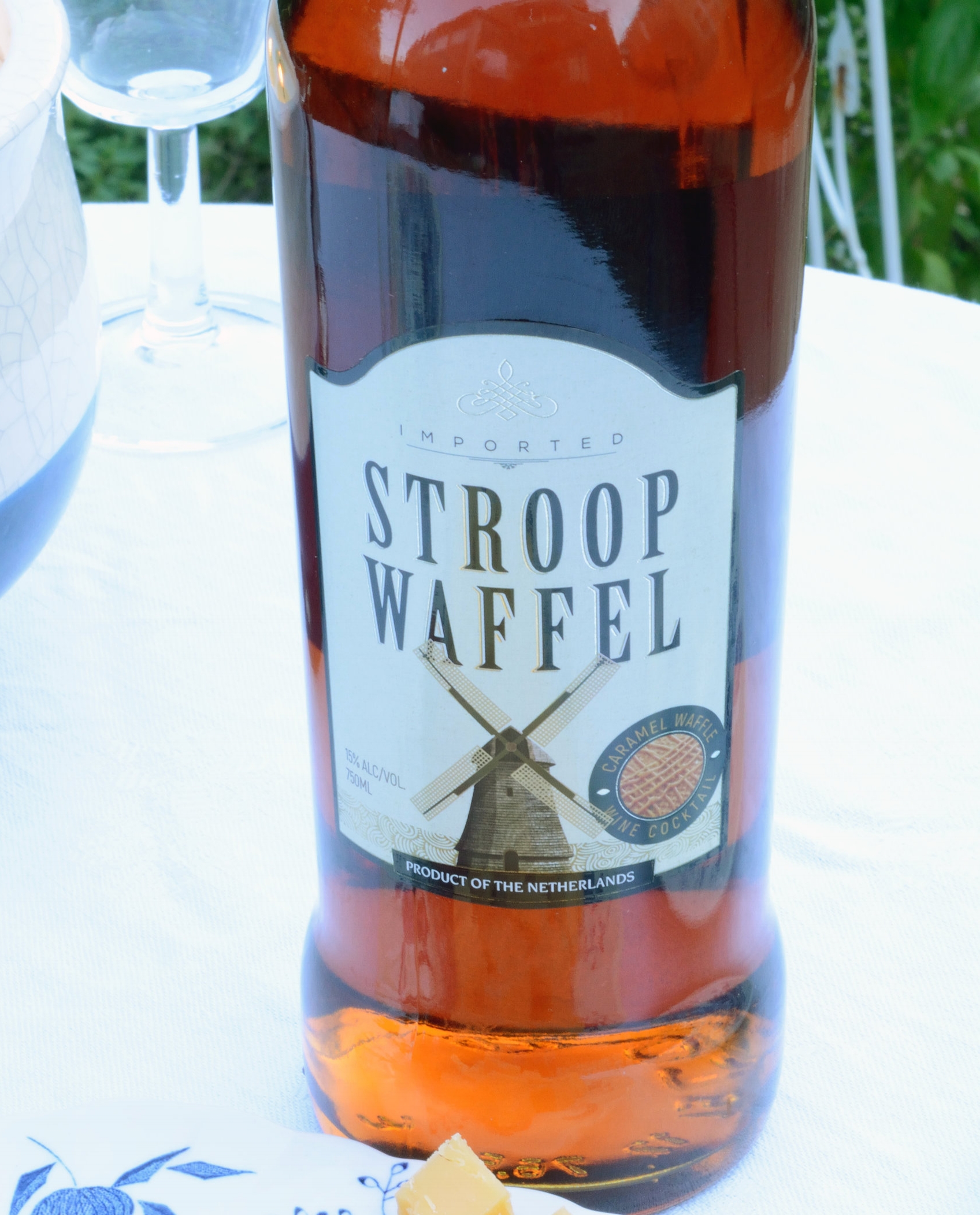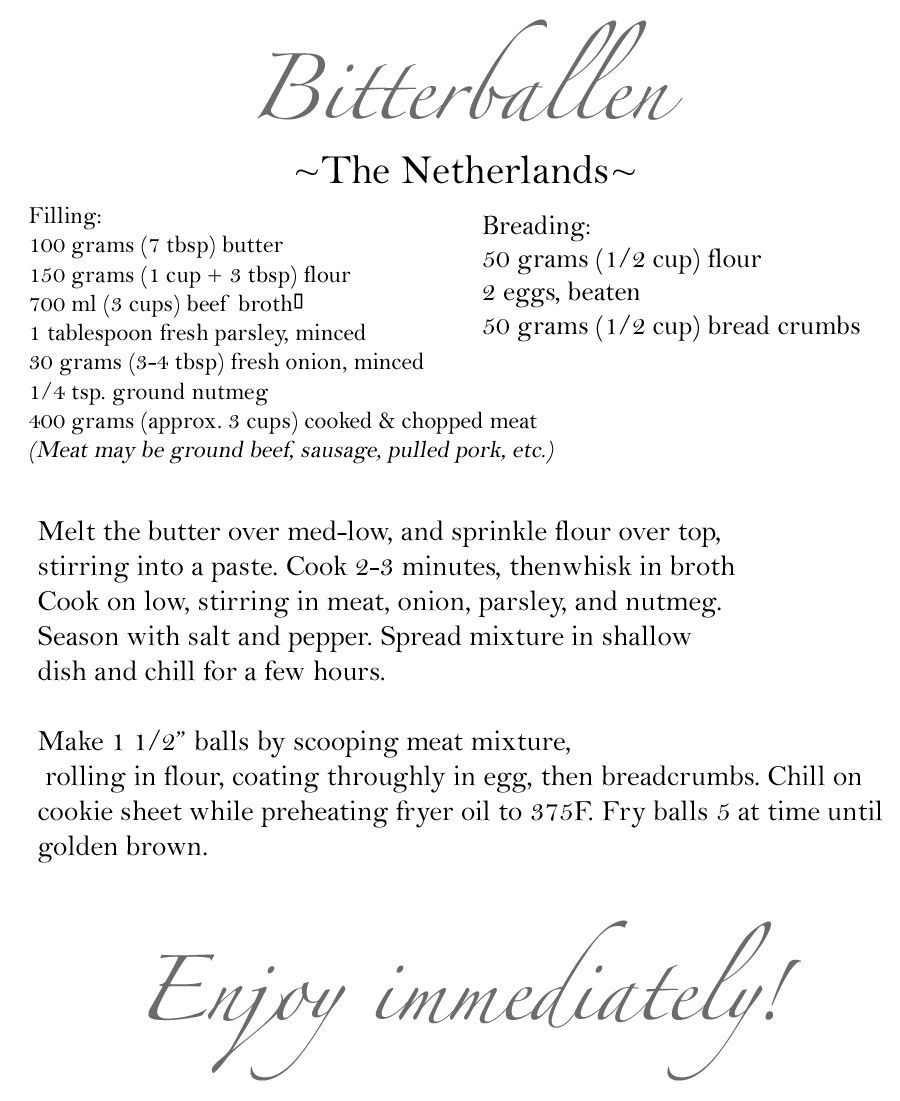Join me on my imaginary #BackpackEurope journey ...
I tarried a bit on the first stop of my Whimsical European Tour. The Netherlands was such a welcoming place that I just couldn't tear myself away. These are just a few of the terrific sites I visited:
My wealthy aunt supplemented my "hostel-only" travel budget by paying for a stay in a luxurious 12th century Kasteel. While there, I explored the countryside by bicycle, delighting in the picturesque villages, and ending the day with delicious food and wine.
Gouda is the most prevalent Dutch cheese and many varieties abound. I had two types for comparison - a soft, mild one, and a version that had been aged 18 months. The mild gouda is just what you would expect - creamy with a very light flavor. The aged gouda, from free-ranging cows, is on the right on the cheese plate and is very different in flavor and texture. It has the crumbly texture of an aged cheddar, and the nutty richness of a parmesan or gruyere. Yum!
I also had to try the Stroopwaffel liqueur, which incorporates the flavor of one of the Netherlands most famous treats. Stroopwafel is a thin waffle sandwich, filled with caramel. The liqueur, or "wine cocktail" as it is called on the label, is a blend of apple-beet wine, grain spirits, and flavor. Not one to typically drink liqueurs, and unable to picture what a stroopwafel drink would taste like, I was hesitant. However, it was delicious! It had slightly thick and syrupy consistency. The liqueur would be dessert in itself, or a lovely addition to your morning coffee (for a very lazy morning.)
Of all the foods I tried, my favorite had to be - bitterballen. This savory, fried snack is found in pubs throughout the country. I had a delicious version at the kasteel, and I was able to wheedle the recipe out of the chef. The recipe, adapted from that found on Holland.com, consists of roux, made into a gravy with beef broth, to which minced onion and shredded or ground meat is added. This mixture is chilled for several hours, so it may be scooped into balls, breaded and fried. The breading comes out deliciously crunchy, and the filling is a creamy gravy. Perfection. Bitterballen are often served with mustard, but I found they needed no accompaniment. Thank goodness I have the recipe, as I foresee these being added to my regular appetizer rotation at home!
Unfortunately, I didn't speak any Dutch before my travels, but I was able to get around as an English-speaker just fine. Happily, while touring the country, I picked up a few useful phrases. I have listed a few below. To hear a pronunciation, enter the word on Forvo.com, and most likely, you will find a recording of a native speaker saying the word or phrase.
As I leave the Netherlands, I also leave behind my new friends Tiuri and Piak, who I met through their adventure: The Letter for the King. The children's novel by Tonke Dragt was published in 1962, but it was translated to English over 50 years later. The book was award-winning, taking a prize for the best Dutch children's book both in the year it was published, and a prize for the best overall in the latter half of the 20th century. I understand why it has been so well-loved; it is a timeless adventure tale.
On the eve of his knighthood, when young squire Tiuri was quietly passing his vigil in the chapel, a stranger desperately requested help. Recognizing the anguished stranger was in true need, and breaking the rule that the prospective knights may not leave the chapel until called in the morning, Tiuri follows the instructions given by the stranger - setting in motion a series of events the boy never could have imagined. In assuming the quest to deliver the secret letter to a king in a distant land, the young squire encounters opposition and obstacles time and time again.
For me, the story began slowly, I had to adjust to the language and style of speech, and not being familiar with the historic culture of knights, I learned a good amount about how the sociopolitical structure worked - at least in this fictional tale. Once I was a bit more grounded in the prose, and the plot gathered steam, I was enthralled. From servants and farmers, to knights-errant and lords, Tiuri helps and receives help from every level of society. Along with Tiuri, we don't know what is in the letter and why it is so important that it must reach the king, but we feel the urgency, and his pangs of fear and disappointment when coming against a seemingly insurmountable hurdle. We delight with him that he finds a friend and ally to assist him on his quest.
The Letter for the King is certainly a moral tale, but it is more than a tale of good and evil. The story expands beyond that strict dichotomy - even the evil may show some good, and the good may make mistakes rooted in base emotion. As in life, the difficult decisions are never easy, and often there are equally good reasons to chose either path, and the right choice may have negative consequences. I enjoyed the journey with Tiuri, and I am pleased there is a sequel - The Secrets of the Wild Wood.















